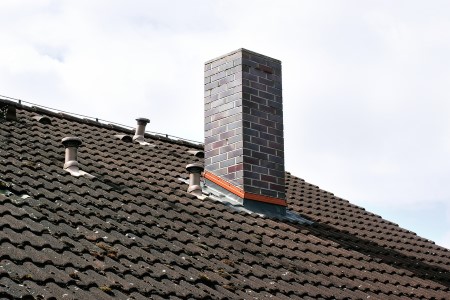24/7
Emergency Services
We Work Directly
With Your Insurance Company
We Help
Save You Money
How To Prevent Chimney Leaks

A leaky chimney can mean costly repairs if not taken care of immediately. It is easy to spot water damage from a leaky chimney by dark spots, sagging ceilings, or even water actively dripping from above. Catching and repairing these issues is beneficial to your pocketbook, but also vitally important to your home!
The biggest cause of leaky chimneys tends to be a problem with the flashing – which we’ll discuss in further detail.
What is Chimney Flashing?
Chimney flashing is a sheet of metal that is installed over where the chimney meets the roof of your home. This metal sheet effectively creates a water-tight barrier. Flashing however is not permanent and needs to be replaced. Since flashing is on the roof of your home, it is difficult to see when flashing is compromised. Having an annual inspection is recommended because of this.
How is Flashing Installed?
Flashing consists of two metal sheets. The base flashing is first installed underneath a shingle and placed upwards against the brick chimney. Typically, holes and cracks are found in the bracket sections of the base flashing, causing water to leak into your attic.
The second piece of flashing to be installed is countered flashing. It is bent over the base flashing and is embedded into the chimney mortar, sealing off the top portion of the step flashing.
Flashing installation can be tricky and challenging if not done properly. Connecting and bending the corners correctly is difficult. Without a good installer, corners tend to be the most vulnerable to leaks. Even with additional caulking to help with additional waterproofing, leaks can still happen.
What Materials are Used in Chimney Flashing?
The type of metal used on your roof and ceiling flashing varies depending on region and cost. Southern homes typically use galvanized steel or aluminum as standard flashing options, but high-end installations will also turn towards copper.
While it is higher in price, copper is a great material for chimney flashing due to its durability and the fact that copper does form a more watertight seal around the corners.
In northern states, metal sheets made of lead are favored by installers. It’s soft, pliable, and can be bent to nearly any shape. Regardless of which material is used, layering is the key to a proper watertight installation for chimney flashing.
How to Identify Flashing Problems
With a chimney being high on the roof, it can be difficult to spot issues before it is too late. Water will enter your home through the attic. It can then potentially leak into other levels of your home if not treated right away.
Water damage can cause damage to wood in your attic or drywall. It only takes minimal standing water can cause mold problems.
To detect a leak in your chimney flashing, it is recommended to run a hose where the roof and chimney meet and check for any leaks in your attic. This is easiest with two individuals – one running the hose, the other in the attic watching for leaks. If there is water inside your attic – you know it is time to call in a professional to check and replace the chimney flashing.
Call Riverside Restoration Inc.
At Riverside Restoration Inc., we have a water damage team standing by ready to assist with any problems related to water damage due to faulty chimney flashing. Mold and wood rot are just two issues that could present after water damage is found in your attic. Call our team for a free estimate .
Need Help with Restoration & Remediation?
Contact Riverside Restoration

